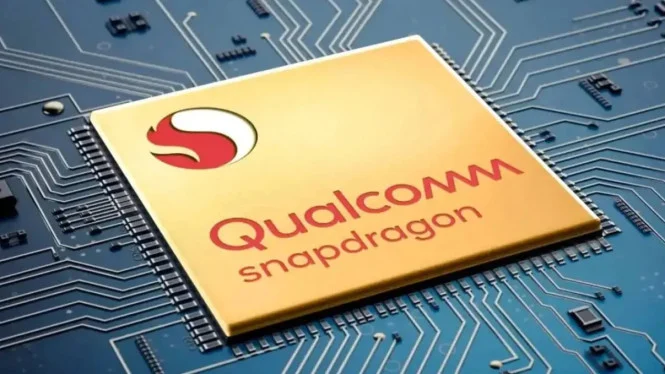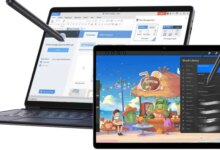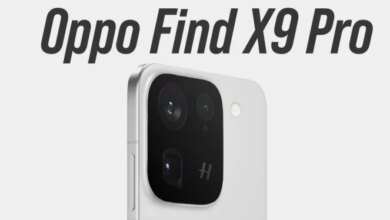
Qualcomm has announced a major breakthrough in cross-platform file sharing by enabling Quick Share support compatible with Apple’s AirDrop on Snapdragon-powered devices. This development marks a significant step towards interoperability between Android and iPhone ecosystems that have traditionally been isolated from each other. Millions of users with devices powered by Snapdragon system-on-chip (SoC) will soon be able to share files seamlessly with iPhone users without needing third-party apps.
Earlier, Google introduced an AirDrop-compatible version of Quick Share exclusive to its Pixel 10 phone featuring the Google Tensor chipset. Qualcomm’s latest announcement reveals that this capability will extend beyond Google’s hardware. Users of popular Android brands such as Samsung Galaxy, Xiaomi, OnePlus, Oppo, and Vivo can look forward to receiving this feature through system updates. This interoperability effectively breaks down long-standing barriers in mobile file transfer technology.
Background: Bridging the Android–iPhone File Sharing Divide
File sharing between Android and iPhone users has long been a challenge due to proprietary protocols. Apple’s AirDrop works only between Apple devices, while Android’s Quick Share initially supported only Samsung phones before expanding across Android brands. In mid-2025, Google revealed plans to integrate AirDrop’s protocol into Quick Share to enable fast and secure wireless file transfers across both platforms.
This feature utilizes Bluetooth Low Energy (BLE) for device discovery and Wi-Fi Direct for high-speed data transfer. It also employs end-to-end encryption to ensure privacy. Initially, this was possible only on Google’s Tensor-powered Pixel 10 due to hardware and software optimizations unique to Google’s chipset. Qualcomm’s decision to support this protocol on Snapdragon SoCs opens the door for widespread adoption on millions of devices.
Qualcomm’s Role in Expanding Interoperability
By confirming Quick Share compatibility with AirDrop on Snapdragon chips, Qualcomm positions itself as a key enabler of cross-ecosystem communication. Snapdragon SoCs from the Snapdragon 8 Gen 2 up to the latest Snapdragon 8 Gen 5 will support this feature. This means flagship models like Samsung Galaxy S25, Xiaomi 15, and OnePlus 13 are likely to receive updates that enable Android-to-iPhone file sharing capabilities without additional software.
Qualcomm’s integrated radio modules, combining Wi-Fi and Bluetooth hardware, are already compatible with the protocol, requiring mainly software enhancements to activate the feature fully. This hardware-level support gives Snapdragon an edge in accelerating the rollout of cross-platform file sharing.
Devices Confirmed and Expected to Support the Feature
- Google Pixel 10 (Tensor G5 chipset)
- Snapdragon 8 Gen 2 and newer Snapdragon-powered devices
Likely Supported:
- Flagship and mid-range phones from Samsung, Xiaomi, Oppo, Vivo, and OnePlus released between 2025 and 2026
- Tablets with Snapdragon processors
- Snapdragon-based Chromebooks, such as those using Microsoft SQ3 chips
Uncertain Support:
- Devices powered by MediaTek Dimensity chips
- Samsung devices with Exynos processors
- Older iPhones (iPhone 12 and earlier), depending on iOS compatibility
Though MediaTek and Samsung’s Exynos platforms have not formally announced support, Qualcomm’s ecosystem-leading position and tightly integrated hardware/software design make Snapdragon devices the primary focus for now.
Implications for Users and the Industry
For users, this interoperability means that sending photos, videos, documents, and contacts between Android and iPhone will no longer require third-party applications like SHAREit or Telegram. File transfers will be almost instantaneous and secure, greatly enriching the user experience. This new openness further reduces “ecosystem lock-in” — a psychological barrier that has often kept users tied to a particular brand or operating system due to compatibility concerns.
From an industry perspective, this development signals a shift toward more open mobile ecosystems. Regulatory pressures such as the EU’s Digital Markets Act may have nudged companies toward collaboration. Qualcomm’s involvement also indicates that chipset manufacturers recognize the value in cross-platform functionality to better serve consumer demands.
Deployment Timeline and Usage Tips
The initial launch of Quick Share with AirDrop compatibility is expected around November to December 2025, coinciding with the anticipated release of the Pixel 10. Rollout across Snapdragon devices should follow in Q1 2026 through Android 15 or 16 updates. OEM manufacturers will determine the timing and user interface integration on their respective devices.
Users are advised to keep their systems updated to the latest Android version and enable both Bluetooth and location permissions for device detection during transfers. These settings are essential for Quick Share to function effectively.
Outstanding Challenges
Despite this progress, some challenges remain:
- Consistency across different device brands may vary depending on OEM support.
- Apple may impose limitations on the types or sizes of files that can be received from Android devices.
- Privacy concerns could linger for users wary of sharing data across operating systems.
Nevertheless, these issues represent early growing pains rather than deterrents, reflecting the technical and business complexities inherent in true cross-platform collaboration.
Qualcomm’s announcement marks a pivotal moment in mobile connectivity. By enabling Quick Share on Snapdragon devices to work seamlessly with Apple’s AirDrop, the company is dismantling one of the biggest hurdles in digital communication. This will empower millions of Android users with unparalleled freedom to share files effortlessly with iPhone users, signaling a new era of mobile interoperability and user choice.





